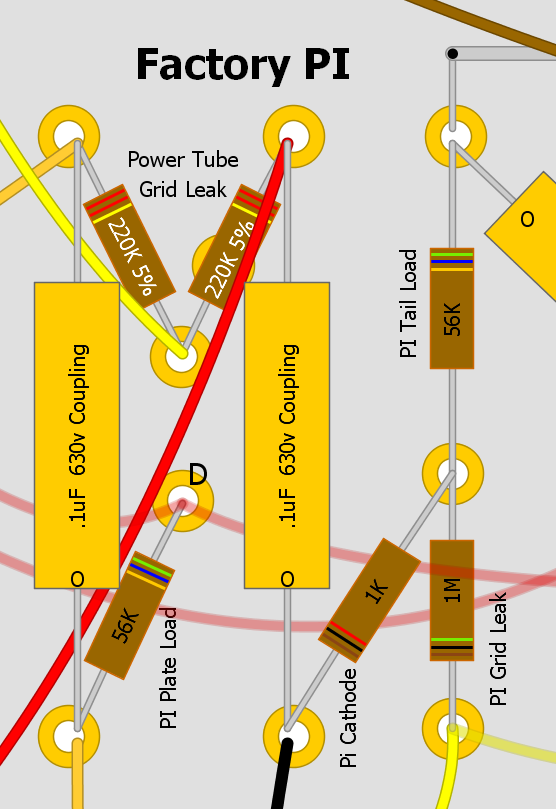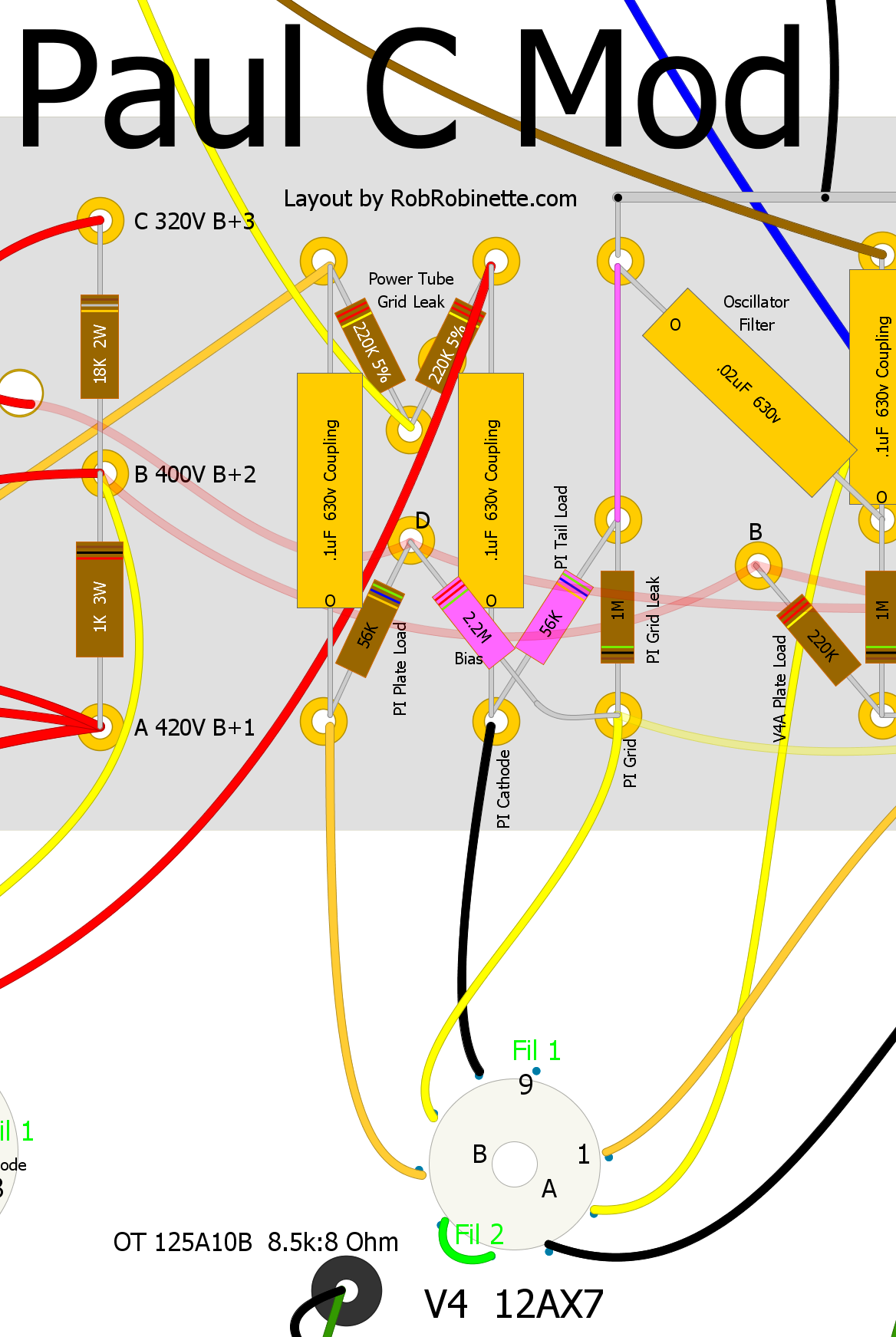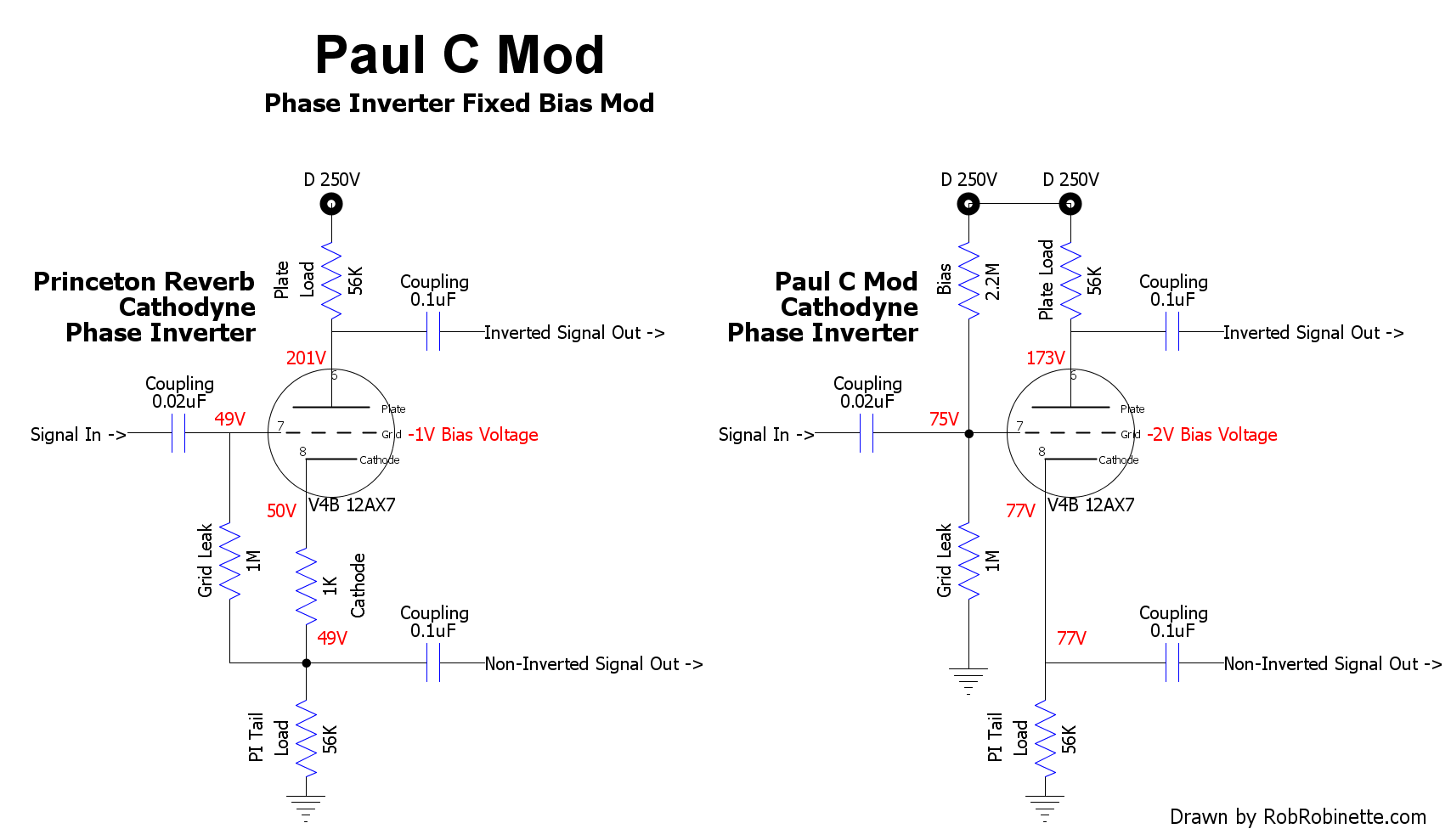|
Fender™ Princeton Reverb Mods
Special thanks to John Stokes, Paul C. and Rob Robinette.
Because of the necessity of displaying
large, easy to read drawings, this page is quite wide. You will need
to scroll left and right as well as up and down to see the complete drawings.
I don't really recommend the following mods but they are
available if you really need to change the character of the vintage 1960s or
1970s Princeton Reverb:
If you need more clean headroom and volume than what an
efficient speaker can do then the "Stokes Mod" is an easy way to get it. The
phase inverter is powered by the "D" power node with only 240 volts on tap. The
Stokes Mod changes the phase inverter's power source to the unused "C" power
node located at the extreme upper left of the circuit board. The C power node
has 320 volts to give the phase inverter a larger signal swing before distortion
begins for added headroom. This mod is often combined with the Paul C Mod in the
next section. The Stokes Mod is a good mod for people who like to run 6L6 or
5881 power tubes because the phase inverter will have more voltage swing to more
properly drive the big power tubes. When used with 6V6 power tubes the Stokes
Mod will shift the balance between preamp and power tube distortion toward the
power tubes which you may or may not prefer.

The two pink wires are the Stokes Mod: One connects the C
power node (top left circuit board) to the top of the 56k phase inverter plate
load resistor and the other runs from the cap can D power node to the V3 plate
load resistors. Compare this wiring to the factory wiring in the layout at the
top of this page.
The Paul C Mod changes the cathodyne
phase inverter from cathode bias to fixed bias to offer more clean headroom and
give a more balanced output. You will get a more balanced phase inverter output
but the decrease in sweet sounding even order harmonics will sterilize the tone
a little. This is one of the most "didn't like it so I reversed it" mods for the
Princeton Reverb.
The mod creates a fixed bias on the phase inverter grid by
creating a voltage divider with the 2.2M Bias resistor and 1M Grid Leak. If the
phase inverter power node is around 250v the grid voltage after the divider will
be +75v. The cathode will be at an even higher voltage of around +77v due to the
56k PI Tail Load resistor so the difference between grid and cathode results in
a fixed negative bias voltage of around -2v. This leads to a more balanced bias
point and reduces harsh "double frequency" overdrive created by excessive plate
clipping.


Factory phase inverter and the Paul C Mod. Remove the 56k
PI tail load resistor and replace it with a jumper. Remove the 1k PI cathode
resistor and replace it with the 56k resistor removed in the previous step. A
2.2M bias resistor is added and connects to the "D" power node at the top of the
56k PI plate load resistor to the PI grid. The PI Plate Load and 2.2M resistor
can alternatively be connected to the "C" 320V power node at the upper left
corner of the circuit board for even more clean headroom (Stokes Mod).

The Paul C Mod can be applied to any cathodyne phase
inverter not just the Princeton Reverb. The Paul C Mod's 2.2M bias resistor
forms a voltage divider with the 1M grid leak to set the fixed bias voltage at
75v. The grid leak resistor is grounded and the cathode resistor is not needed
so it is deleted.
|